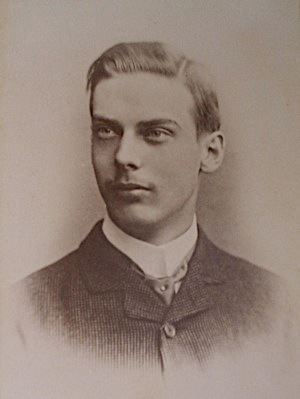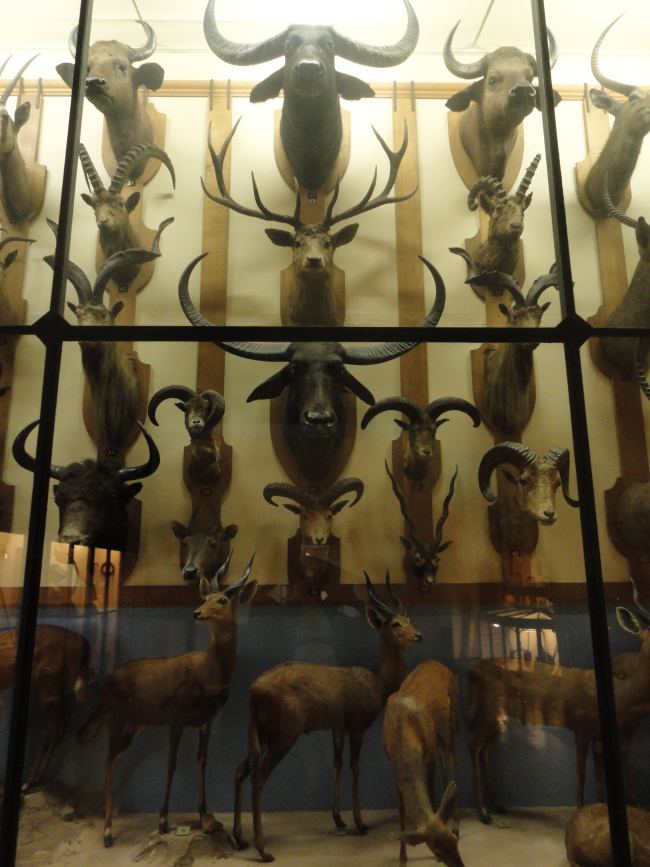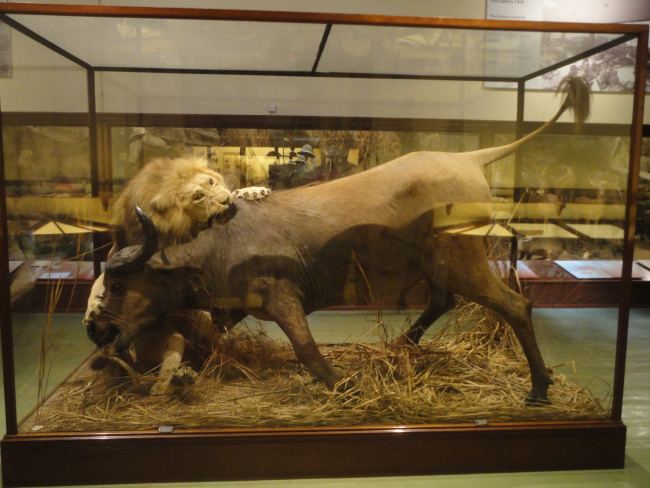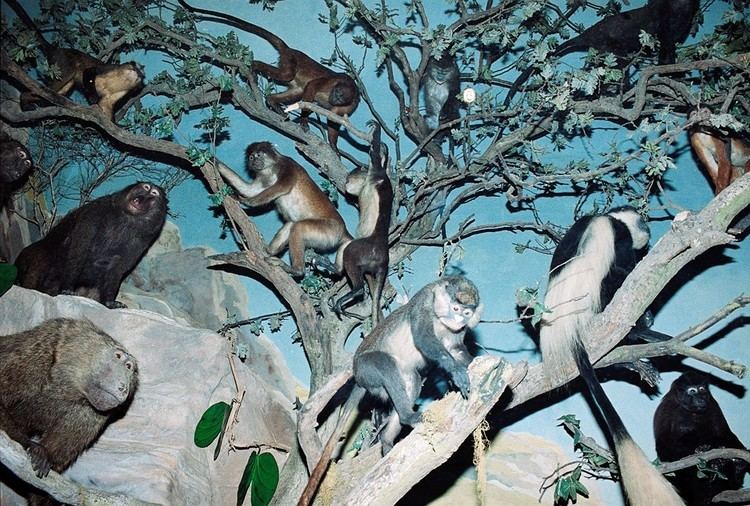Spouse(s) Hannah Brayton Slater Name Percy Powell-Cotton | ||
 | ||
Occupation Hunter, explorer, conservationist Children Diana Powell-CottonAntoinette Powell-CottonMary Powell-CottonChristopher Powell-Cotton Relatives Ida Powell-CottonGerald Powell-Cotton Parents Henry Horace Powell-Cotton, Matilda Christina Powell-Cotton | ||
Education Small Arms School Corps | ||
Major Percy Horace Gordon Powell-Cotton, FZS, FRGS, FRAI, JP (20 September 1866 – 26 June 1940) was an English explorer, hunter and early conservationist, most noted for the creation of the Powell-Cotton Museum in the grounds of his home, Quex Park in Birchington-on-Sea, Kent, England. Powell-Cotton is noted for bringing an extraordinary number of animal specimens back from his travels across Africa, potentially creating the largest collection of game ever shot by one man. Despite this, Powell-Cotton was an early conservationist, helping categorise a wide number of species across the globe. His two daughters, Antoinette Powell-Cotton and Diana Powell-Cotton shared his passion for conservation, pursuing archaeology and anthropology respectively.
Contents

Powell-Cotton made a large number of films (Powell-Cotton filmography) including ethnographic, documentary and wildlife films (Powell-Cotton Ethnographic Films).

Early life

Percy Powell-Cotton was born on 20 September 1866, in Garlinge, Margate, to Henry Horace Powell-Cotton and Matilda Christina (née Gordon). Powell-Cotton had two siblings: a sister, Ida and a brother, Gerald. Most of Powell-Cotton’s early life was spent in London, although he joined his family on many weekend and summer trips to their home in Margate. Aged fifteen, Powell-Cotton helped his father modernise Quex House, before the family returned to live there. Whilst living there, Powell-Cotton began breeding chickens, hunting rabbits and photographing wildlife. He kept meticulous records of these endeavours, a habit that would follow him into later life.
Military career

Powell-Cotton joined the Militia Battalion of Northumberland Fusiliers in 1885, and attended the Hythe School of Musketry for training. During the Second Boer War, Powell-Cotton served in the Volunteer Regiment of the 5th Battalion, who were stationed in Malta. In July 1901, he retired from military service. However, at the outbreak of World War I in July 1914, Powell-Cotton offered himself up for military service. He was turned away as, at 48, he was considered too old to serve. In lieu of serving in the war, Powell-Cotton offered his home, Quex House, to the Birchington Volunteer Aid Detachment to use as an Auxiliary Military Hospital.
Expeditions
Powell-Cotton embarked on over 28 expeditions between 1887 and 1939, across Africa and Asia, gathering various zoological and ethnographical specimens
In 1900, Powell-Cotton met with Emperor Menelik II, who granted him permission to hunt across Ethiopia. Powell-Cotton's subsequent expedition across Ethiopia formed the basis of his first book, A Sporting Trip Through Abyssinia. In 1902 he was in Uganda and Kenya, visiting Lake Baringo.
In November 1905, whilst on an expedition in Kenya, Powell-Cotton married Hannah Brayton Slater in Nairobi Cathedral. To save interrupting his ninth expedition, his new wife chose to join him on his expedition, for a honeymoon that lasted two years.
In 1907, still on his honeymoon expedition, Powell-Cotton was badly mauled by a lion he had thought incapacitated by a precious shot. As he approached it, the lion leapt up and attacked with its claws and jaw. Powell-Cotton escaped relatively unharmed due to a rolled up copy of Punch magazine in his breast pocket protecting him from the majority of the lion's attacks. The lion, the suit that Powell-Cotton was wearing and the copy of Punch are now all on display at the Powell-Cotton Museum.
Powell-Cotton's expeditions directly led into the creation of the Powell-Cotton Museum. After bringing back a range of zoological specimens from his early travels, Powell-Cotton contracted Rowland Ward to prepare the animals for display. Whilst on an expedition through India in 1896, Powell-Cotton enlisted his brother Gerald to oversee the construction of the Powell Cotton Museum in the grounds of Quex House.
Whilst on his expeditions, Powell-Cotton created a wide range of ethnographic films documentary the peoples and animals of the countries. In later life, he collaborated with his daughter Diana, who further added to the filmography after Powell-Cotton died.
The wide range of animal specimens that Powell-Cotton returned with from his travels have proved to be a valuable resource in taxonomic research, even in the present day. Consequentially, Powell-Cotton has several species named in honour of him.
